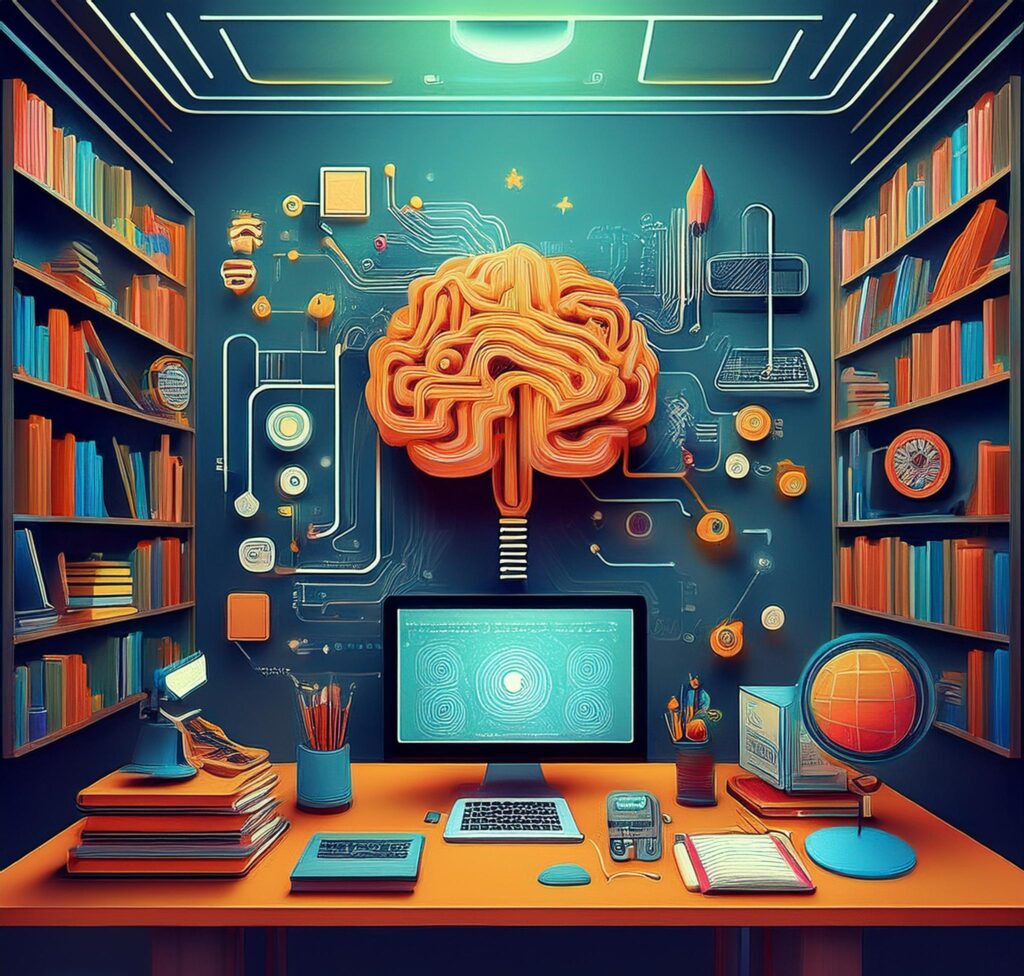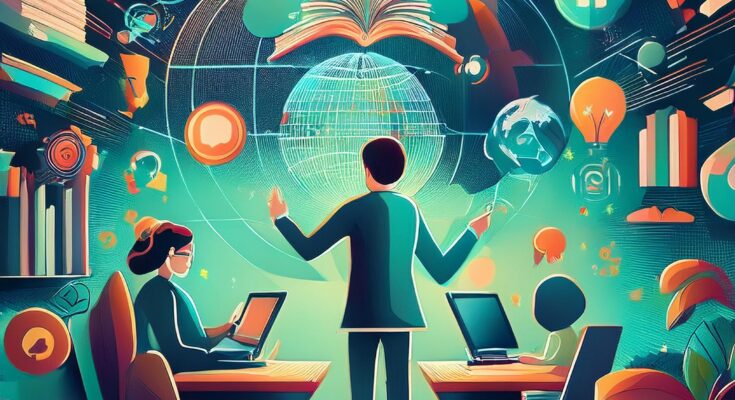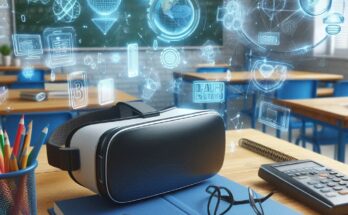Introduction
In today’s fast-paced world, technology has become an integral part of our daily lives, influencing how we work, communicate, and learn. The integration of technology in education is not just a trend but a necessity for modern classrooms. By weaving technology into the fabric of education, we can create more engaging, efficient, and personalized learning experiences for students. In this article, we’ll explore the various facets of technology integration in education, from its benefits to the hurdles educators must overcome.
Understanding Technology Integration
What is Technology Integration in Education?
At its core, technology integration in education refers to the use of technology tools and resources in the classroom to enhance the learning process. This can include anything from using computers and tablets to access online resources, to incorporating interactive whiteboards and digital learning platforms into everyday lessons. The goal is to seamlessly integrate these tools in a way that supports educational objectives, rather than just using technology for the sake of it.
Examples of Technology Used in Classrooms
Some common examples of technology in classrooms include interactive whiteboards, which replace traditional chalkboards, and tablets or laptops for student use. Additionally, educational software and apps provide tailored learning experiences, while online learning platforms enable both teachers and students to access a wealth of resources from anywhere at any time.
The Evolution of Technology in Education
From Chalkboards to Smartboards: A Brief History
It started with the humble chalkboard, a revolutionary tool in its time, and has evolved into the smartboards and interactive displays we see today. Over the years, educators have continually adapted to new technologies, each offering new possibilities for enhancing the learning experience.
The Rise of Digital Learning Tools
With the advent of the internet and digital tools, education has undergone a significant transformation. Digital learning tools such as online courses, virtual classrooms, and educational apps have made education more accessible and flexible, catering to diverse learning styles and needs.

Benefits of Technology Integration in Education
Enhancing Student Engagement and Motivation
One of the most significant advantages of integrating technology into education is the ability to increase student engagement. Interactive tools, multimedia content, and gamified learning experiences capture students’ attention and make learning more enjoyable, which in turn boosts motivation.
Personalized Learning Experiences
Technology allows for personalized learning, where students can learn at their own pace and in their preferred style. Adaptive learning software, for example, adjusts the difficulty level of tasks based on the student’s performance, ensuring that each learner is appropriately challenged.
Access to Vast Educational Resources
The internet has opened up a world of resources for both teachers and students. From online textbooks and research papers to educational videos and interactive simulations, the availability of information is virtually limitless. This democratization of knowledge empowers students to explore topics in greater depth and from multiple perspectives.
Collaboration and Communication Improvements
Technology also facilitates better communication and collaboration, both in and out of the classroom. Tools like Google Classroom, Zoom, and collaborative document editors enable students to work together on projects, share ideas, and receive instant feedback from teachers.

Challenges of Technology Integration in Education
Digital Divide and Accessibility Issues
While technology has the potential to enhance education, it can also widen the gap between those who have access to these tools and those who do not. The digital divide is a significant challenge, particularly in underserved or rural areas where students may not have reliable internet access or the necessary devices.
Training and Support for Teachers
For technology integration to be successful, teachers need proper training and ongoing support. Many educators may not be familiar with the latest tools or may feel overwhelmed by the prospect of incorporating them into their teaching. Professional development and technical support are crucial to help teachers feel confident and competent in using technology effectively.
Potential Distractions in the Classroom
Students may be tempted to use their devices for non-educational purposes, such as browsing social media or playing games, which can detract from the learning experience. Educators need to find a balance between leveraging technology and maintaining focus in the classroom.
Key Technologies in Modern Classrooms
Interactive Whiteboards
Interactive whiteboards have replaced traditional chalkboards, offering a dynamic way to present information. Teachers can display multimedia content, annotate directly on the board, and engage students in interactive activities that make learning more hands-on.
Tablets and Laptops
Tablets and laptops have become essential tools in modern classrooms. They allow students to access digital resources, complete assignments, and collaborate with peers. These devices are particularly valuable for remote learning, enabling students to participate in lessons from anywhere.
Educational Apps and Software
A wide range of educational apps and software is available to support various aspects of learning, from language acquisition to mathematics. These tools often include gamified elements, making learning more engaging and helping students to develop skills in a fun and interactive way.
Online Learning Platforms
Platforms like Moodle, Google Classroom, and Khan Academy offer a wealth of resources and tools for both teachers and students. These platforms provide access to courses, assignments, assessments, and communication tools, creating a comprehensive digital learning environment.

Role of Artificial Intelligence in Education
AI-Powered Tutoring Systems
Artificial intelligence (AI) is making significant strides in education, particularly in the form of AI-powered tutoring systems. These systems provide personalized support to students, helping them to understand complex concepts, answer questions, and practice skills at their own pace.
Automating Administrative Tasks
AI is also being used to automate administrative tasks, such as grading and attendance tracking. This not only saves teachers time but also reduces the potential for human error, ensuring that these tasks are completed efficiently and accurately.
Adaptive Learning Systems
Adaptive learning systems use AI to adjust the content and difficulty of lessons based on the student’s performance. This ensures that each student receives instruction that is tailored to their individual needs, helping to close learning gaps and promote mastery.
The Future of AI in Education
Predictive Analytics for Student Performance
In the future, AI could play an even more significant role in education by using predictive analytics to identify students at risk of falling behind. By analyzing data on student performance, AI can help educators to intervene early and provide targeted support to those who need it most.
AI in Curriculum Development
AI could also be used to develop more effective curricula by analyzing the outcomes of different teaching methods and content. This could lead to more data-driven decisions in education, ensuring that students receive the best possible instruction.
Strategies for Successful Technology Integration
Professional Development for Educators
Ongoing professional development is essential for teachers to stay up-to-date with the latest technological tools and teaching methods. Schools should invest in training programs that help educators to develop the skills and confidence they need to integrate technology effectively.
Selecting the Right Tools and Resources
With so many technological tools available, it’s important for educators to carefully select the ones that will best support their teaching objectives. Schools should consider the needs of their students, the curriculum, and the available budget when choosing technology solutions.
Creating a Supportive School Culture
Successful technology integration requires a supportive school culture that encourages experimentation, collaboration, and continuous improvement. Administrators should foster an environment where teachers feel comfortable trying new tools and sharing their experiences with colleagues.

Best Practices for Implementing Technology in Education
Start Small and Scale Up
When introducing new technology, it’s often best to start with a pilot program or a small-scale implementation. This allows educators to test the tools, work out any issues, and gather feedback before rolling them out more broadly.
Involve All Stakeholders
For technology integration to be successful, it’s important to involve all stakeholders, including teachers, students, parents, and administrators. By gathering input from everyone involved, schools can ensure that the technology meets the needs of the entire community.
Continuous Evaluation and Improvement
Technology integration is an ongoing process that requires regular evaluation and adjustment. Schools should continuously assess the effectiveness of the tools they are using and make improvements based on feedback and data.
Addressing Common Concerns
Managing Screen Time
One of the concerns with technology in education is the potential for excessive screen time. Schools should set guidelines to ensure that technology is used in a balanced way, complementing rather than replacing traditional teaching methods.
Ensuring Data Privacy and Security
With the increased use of digital tools, data privacy and security have become major concerns. Schools must implement robust policies and procedures to protect student data and ensure that all technology is used responsibly and ethically.

Case Studies of Successful Technology Integration
Example 1: A Digital Classroom Transformation
One example of successful technology integration is a school that transformed its traditional classrooms into digital learning environments. By providing each student with a tablet and incorporating interactive whiteboards and educational apps, the school saw significant improvements in student engagement and academic performance.
Example 2: Blended Learning in Rural Schools
In another case, a rural school district implemented a blended learning model that combined in-person instruction with online learning. This approach allowed students to access high-quality education despite geographical limitations, leading to improved outcomes and greater equity.
The Future of Technology in Education
Emerging Trends and Innovations
The future of technology in education is full of exciting possibilities. Emerging trends include the use of virtual reality (VR) and augmented reality (AR) to create immersive learning experiences, as well as the continued development of AI and machine learning to personalize education even further.
The Role of Virtual Reality and Augmented Reality
VR and AR are poised to revolutionize education by providing students with immersive, hands-on learning experiences. These technologies can transport students to different places and times, making learning more engaging and helping them to grasp complex concepts.
Preparing Students for the Digital World
As technology continues to evolve, it’s essential to prepare students for the digital world they will enter after graduation. This includes not only teaching them how to use technology but also helping them to develop critical thinking, problem-solving, and digital literacy skills.
Conclusion
Technology integration in education is not just a passing trend; it’s a crucial component of modern teaching and learning. However, successful integration requires careful planning, ongoing support, and a commitment to continuous improvement. As we look to the future, it’s clear that technology will play an increasingly important role in shaping the education landscape, preparing students for the challenges and opportunities of the digital age.
FAQs
What is technology integration in education?
Technology integration in education refers to the use of technology tools and resources in the classroom to enhance the learning process. This includes using devices like computers, tablets, and interactive whiteboards, as well as digital learning platforms and educational software.
How does technology enhance learning?
Technology enhances learning by increasing student engagement, providing personalized learning experiences, and offering access to a vast array of educational resources. It also facilitates collaboration and communication, both in and out of the classroom.
What are the challenge of using technologies in educations?
Some challenges of using technology in education include the digital divide, where not all students have equal access to technology, the need for training and support for teachers.
How can teachers effectively integrate technology?
Teachers can effectively integrate technology by receiving proper training, selecting the right tools and resources, and creating a supportive school culture that encourages experimentation and continuous improvement.
What does the futures holds for technologies in educations?
The future of technology in education includes emerging trends such as virtual reality, augmented reality, and the continued development of AI and machine learning. These technologies will create more immersive, personalized, and data-driven learning experiences.


